& Construction

Integrated BIM tools, including Revit, AutoCAD, and Civil 3D
& Manufacturing

Professional CAD/CAM tools built on Inventor and AutoCAD
9 min read
We lost an analog legend in 2011, but the legacy of Bob Pease still lives on. Like other larger-than-life personalities of his day, Pease exemplified what it meant to be an engineer focused on pure excellence. Part designer, part teacher, he was in love with his work and passionate about sharing his knowledge and helping others without question. As Bob might have said, what’s all this PCB design stuff, anyhow? This is the story of Bob Pease, still alive in all of us.

Bob Pease was famous for many things; his desk is one of them. One can hardly call it a desk though, it was more like a cave with lots of hidden passageways. One colleague at National filmed a rare sighting:
It’s hard not to make any quick judgments about the man based on his knack for clutter. But look beneath the madness though, and you’ll see a man with a precise system and way of understanding his world. One story explains it all. Back when he worked at National Semiconductor, a colleague walked into Bob’s cube needing a schematic diagram for an old chip. Among a dizzying stack of papers, components, and boxes, Pease simply whipped around, dug into a pile, and delivered the diagram.
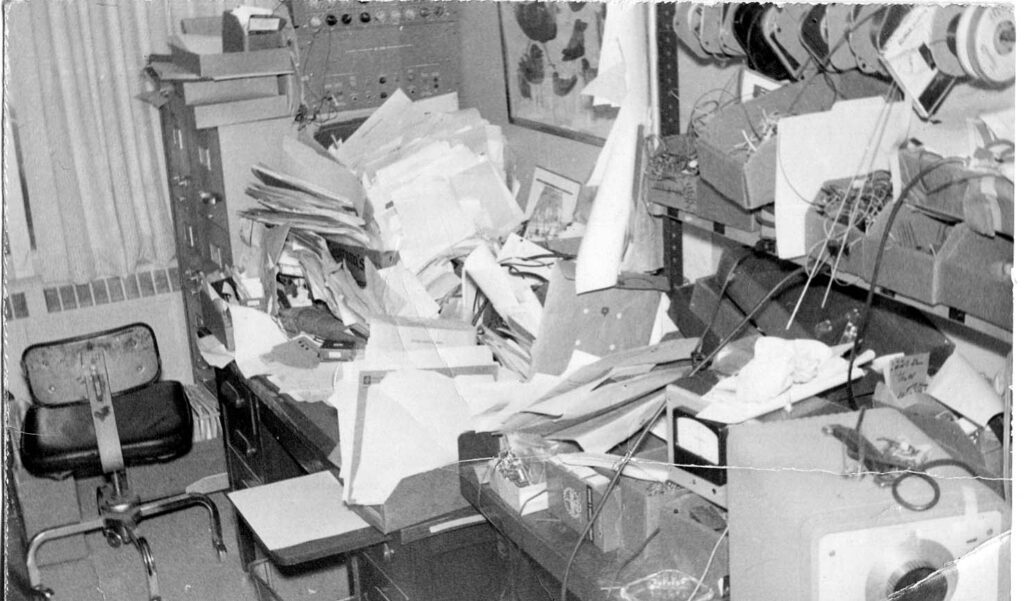
When Bob’s colleague came to return the schematic, he noticed that Pease placed it into an entirely different stack of papers. Hmm, was there actually some systematic filing going on here? This guy decided to test out his theory and return six months later to ask Pease for the same schematic diagram. Without breaking a sweat, Pease dug a few inches into that stack of papers and out came the diagram. There was a method to Bob’s madness that I think some of us will never understand. The analog mind, wild and creatively free.
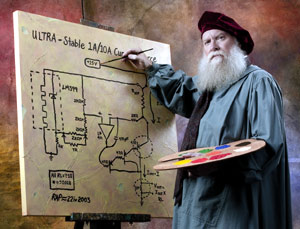
Bob went to high school in Massachusetts and later went on to earn a Bachelor’s degree in Electrical Engineering from MIT. In 1961 he started working for George A. Philbrick Researches where he helped to push operational amplifiers into affordable commercial use with the help of solid-state components.
Bob was later offered a position at Analog Devices but chose to move to San Francisco with his wife in 1976 where he joined the ranks of National Semiconductor, now Texas Instruments. It was at National where Bob’s personality and genius in engineering really began to shine. As a designer and applications engineer, Pease had his hands in the creation of famous analog integrated circuits like LM331 and LM337. He was also a man of real service, answering calls and emails around the clock from engineers in need.
As much as Bob lived in a world of analog design, he also existed in his own world and owned it. National would commonly put on demo days to show off new products and designs. Bob would show up not in company uniform, but instead sported his hiking coat decorated with patches from his journeys in Nepal.
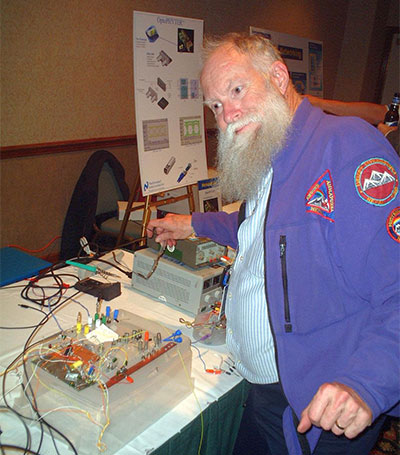
At these shows, Bob would whip together air-wired components to chips that gave engineers an intimate perspective on his theory and methods. Rather than using wires, he would use low-ohm resistors to model trace resistance, and a combination of megohm resistors and reversed diodes to model substrate effects. Bob also used to love using plastic wafer carrier buckets as a support for mounting his banana jacks.
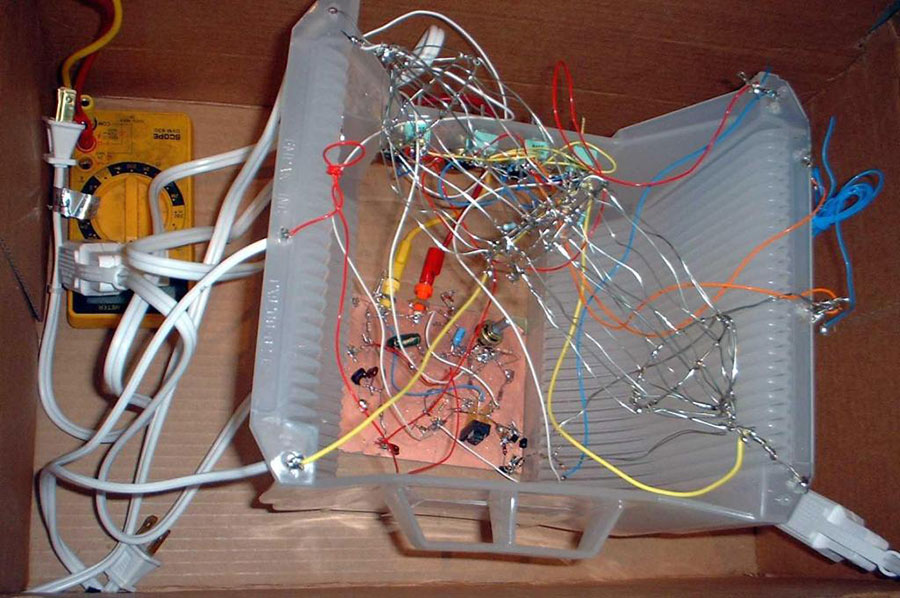
During his 33 years at National, Bob served as the face of the company. I’d imagine this was partly to do with his enthusiastic and quirky personality, genius engineering, and passion for teaching. When National ran analog seminars every few years, Bob would tirelessly travel from city to city, teaching analog engineers the tools of the trade in the United States, Europe, India, and China.
When people talk about Bob Pease, there are many aspects that come to mind. Some people know him for his amazing analog designs. Bob designed quite a few, including:
When all was said and done after a 33-year career, Bob received 21 patents and crafted more than 20 integrated circuits. He was by all accounts an analog design legend.
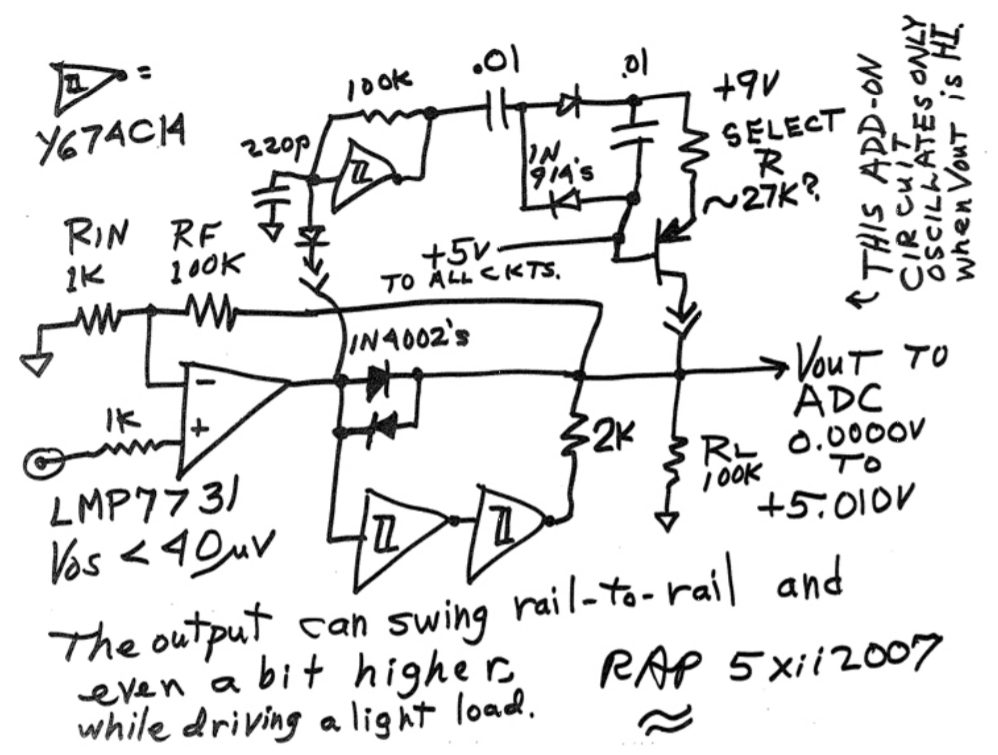
Bob was also known for his far-reaching breadth of experience. Today’s engineers are herded into specialties, but back in Bob’s career, he had experience with analog functions, vacuum tubes, discrete circuits and Rubylith masking materials to design ICs. All of this experience and knowledge from the birth of the semiconductor industry allowed Pease to understand the underlying foundations of his designs at a physics level. Bob could see the big picture and the details, whenever he chose.
As EDN columnist Paul Rako goes on to explain,
“Bob Pease was one of those analog engineers who spanned the semiconductor industry’s early history. He started working on vacuum tubes and discrete components, then monolithic analog circuits with the planar process. Later in his career he put all of this accumulated knowledge to use as an applications engineer. That’s what gave him such breadth.”
Bob’s rich experience and designs went on to land him many awards, including:
At his core, Bob Pease was a passionate teacher, always willing to help fellow engineers in need regardless of what company they worked for. He was great friends with Tim Regan, an amplifier applications manager at Linear Technology, AKA the competition. Bob would commonly stop by Tim’s home to share articles, clippings, or some new analog hardware. He didn’t care what company you worked for, so long as you were passionate about analog design.

There’s one time back at National, where Bob’s fellow engineers needed to be educated on the design of bandgap references. Bob’s personality took hold, and he dubbed himself The Czar of Bandgaps, dressing up in a military suit with a necklace made from metal TO-3 packages. He taught with enthusiasm and owned his role wholly.
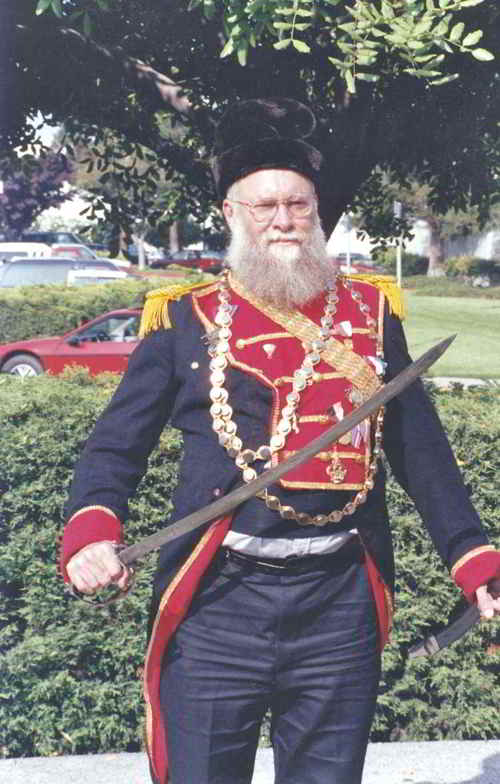
Bob was known for working long hours at National, sharing information with anyone who cared to ask. He didn’t care if the person calling was a National customer or not. They could have been a student, veteran engineer, competitor, it didn’t matter. Bob would answer questions from anyone. All that mattered to Bob was that you had a problem worth solving. As Don Archer, Analog Design Engineer from National put it,
“Discussing the solutions made one think differently and look at alternative possibilities. It was a fun time working with Bob and he loved working through difficult problems to find elegant answers.”
Bob held a deep connection and respect for the environment way before it was a corporate social responsibility movement. In the 1980s he putzed around in a 1967 VW Beetle. Why? It got 30-40 miles to the gallon. But then disaster struck.
Late one evening Bob was leaving the National Parking lot. It was also during this time that the security staff had wired up a chain over the entrance to secure the lot. The only problem was there wasn’t any visible marking on it. Unseen by Bob, he plowed through it, ultimately totaling his 1967 Beetle and turning it into a convertible in the process.
Bob pressed National Semiconductor to buy him a new car, and so they did. But to the company’s’ surprise, Bob bought himself a 1969 Volkswagen Beetle. The man just loved to keep it simple. When Bob was asked why he didn’t buy an expensive new car on National’s dime, Bob explained that the Beetle was exactly the car he wanted to drive. He knew what he wanted.
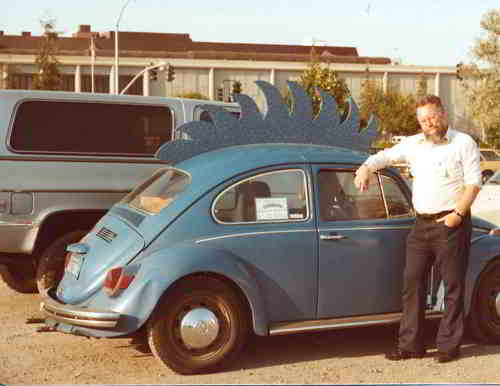
June 18, 2011 was the day we lost Bob Pease. He was leaving a memorial for Jim Williams, another analog design legend, where he reportedly lost control of his car and ran into a tree. Bob wasn’t wearing a seatbelt, and paramedics said his his death was likely instant. He left us at 70 years old, but not without a rich reservoir of engineering knowledge. We’d like to share this with you now to spread it along with your journey!
Bob was a fantastic writer that artfully blended humor with an in-depth knowledge and passion for teaching his craft. He authored eight publications in total. The most popular include:

Bob also wrote a popular monthly column in the Electronic Design Magazine called Pease Porridge. Here he talked about all of his rich experience in the world of analog design with some personal anecdotes in between. He started most blogs with his trademark title, ‘What’s All This [subject] Stuff, Anyhow?” Bob’s columns are still alive and well on the Electronic Design Blog here.
In 2003 Bob landed center stage on the semiconductor industry’s first online talk show made for analog designers. The “Analog by Design Show” was a hit, and it’s where Bob’s persona really started to grow. You can still enjoy 18 episodes of the Analog by Design show on YouTube here.
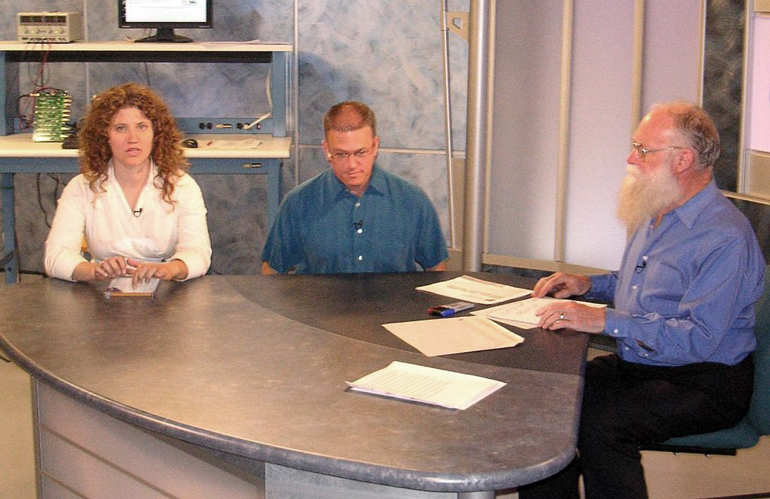
For those of you looking for a more personal glimpse of Bob Pease, there’s also the Bob Pease website archive here. You’ll find plenty of rich information on analog design, along with more personal moments of Bob’s life, like his trekking journeys in Nepal.
Make no mistake about it, the semiconductor industry lost a giant in 2011 with the passing of Bob Pease, but his legacy still lives on. As former National CEO Don Macleod says,
“Bob Pease was an extraordinarily talented engineer who cared deeply that others gained the knowledge they needed to advance their own work. He was a spokesperson for us for many years, with a worldwide following.”
Bob Pease, you were a hero of our analog world. We miss you dearly.
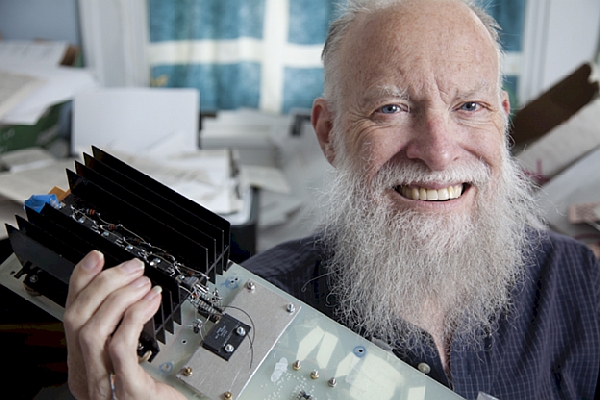
Keep Bob Pease’s work alive. Share his knowledge, and design your next analog circuit in Autodesk EAGLE for free.
By clicking subscribe, I agree to receive the Fusion newsletter and acknowledge the Autodesk Privacy Statement.
Success!
May we collect and use your data?
Learn more about the Third Party Services we use and our Privacy Statement.May we collect and use your data to tailor your experience?
Explore the benefits of a customized experience by managing your privacy settings for this site or visit our Privacy Statement to learn more about your options.